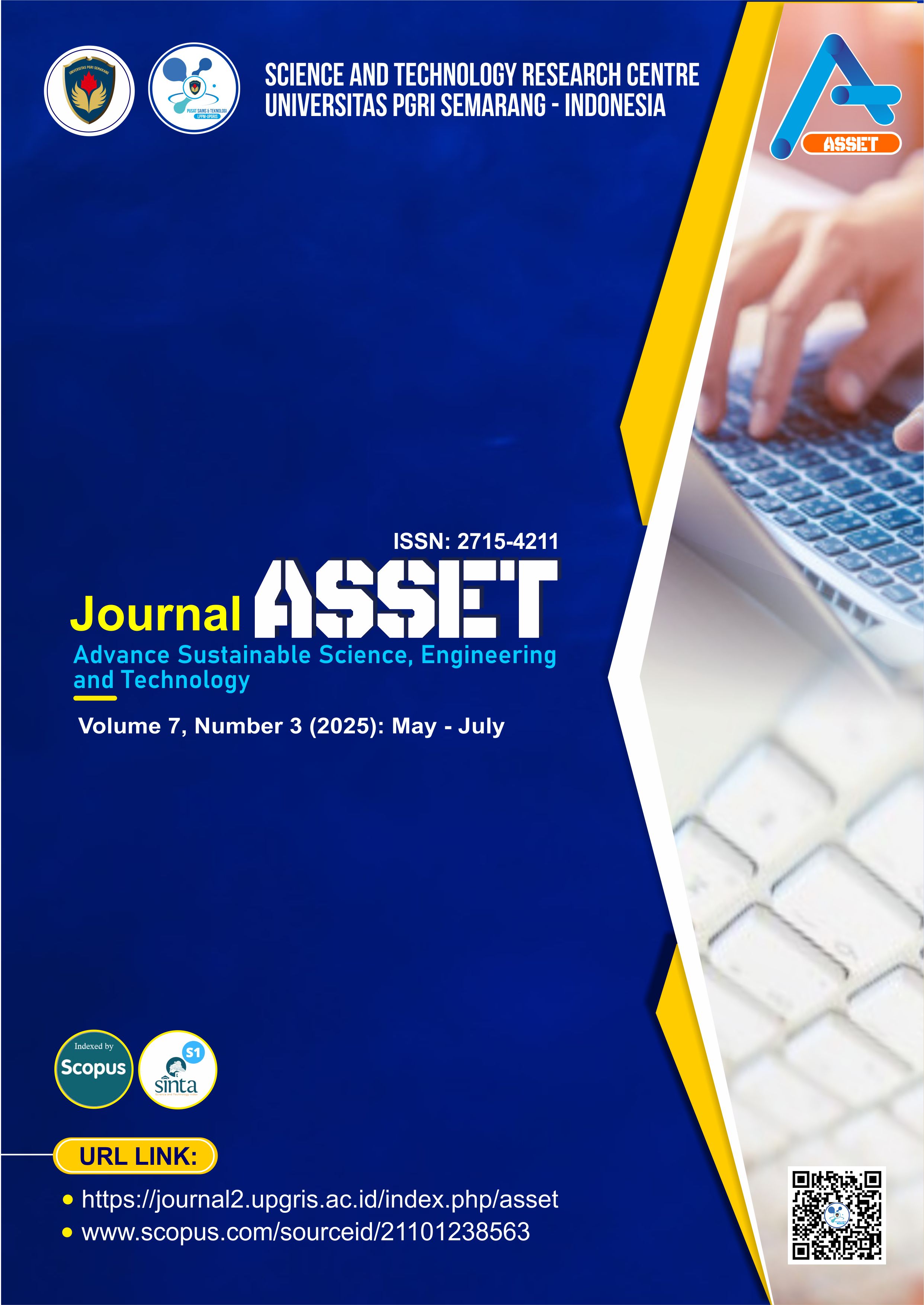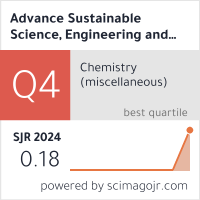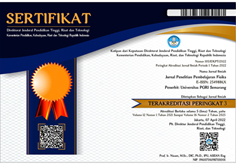Hybrid Deep and Machine Learning Framework for Cloud and Shadow Segmentation in Landsat-8 Imagery
DOI:
https://doi.org/10.26877/asset.v7i4.1958Keywords:
Cascading, Hybrid model, Landsat-8 SPARCS, Remote Sensing, Semantic SegmentationAbstract
Cloud and shadow interference in satellite imagery reduces the quality and reliability of remote sensing data. The traditional method would face issue to predict data near the shadow and cloud. To address this challenge, this study is focus improve the accuracy the area near shadow and cloud detection in Landsat-8 imagery. The implementation of hybrid module using standard CNN and U-Net CNN and a machine learning model using K-Nearest Neighbors (KNN) on SPARCS and CCA18 Landsat 8 dataset. A hybrid approach was then implemented by integrating CNN outputs and metadata into the second model (KNN/RF), and final evaluation was conducted using accuracy metrics. The research results show that the proposed hybrid deep and machine learning approach improves the accuracy of cloud and shadow segmentation in Landsat-8 imagery. Additionally, the implementation demonstrates that this method can reduce manual effort and computational cost, making it suitable for researchers with limited resources.
References
[1] S. A. Boyle, C. M. Kennedy, J. Torres, K. Colman, P. E. Pérez-Estigarribia, and N. U. de la Sancha, “High-resolution satellite imagery is an important yet underutilized resource in conservation biology,” PLoS One, vol. 9, no. 1, p. e86908, 2014. https://doi.org/10.1371/journal.pone.0086908
[2] M. J. Hughes and R. Kennedy, “High-quality cloud masking of Landsat 8 imagery using convolutional neural networks,” Remote Sens (Basel), vol. 11, no. 21, p. 2591, 2019. https://doi.org/10.3390/rs11212591
[3] Z. He, Z. Zhang, M. Guo, L. Wu, and Y. Huang, “Adaptive unsupervised-shadow-detection approach for remote-sensing image based on multichannel features,” Remote Sens (Basel), vol. 14, no. 12, p. 2756, 2022. https://doi.org/10.3390/rs14122756
[4] R. Yamashita, M. Nishio, R. K. G. Do, and K. Togashi, “Convolutional neural networks: an overview and application in radiology,” Insights Imaging, vol. 9, pp. 611–629, 2018. https://doi.org/10.1007/s13244-018-0639-9
[5] L. M. Matsunobu, H. T. C. Pedro, and C. F. M. Coimbra, “Cloud detection using convolutional neural networks on remote sensing images,” Solar Energy, vol. 230, pp. 1020–1032, 2021. https://doi.org/10.1016/j.solener.2021.10.065
[6] E. Ibrahim et al., “Cloud and cloud-shadow detection for applications in mapping small-scale mining in Colombia using sentinel-2 imagery,” Remote Sens (Basel), vol. 13, no. 4, p. 736, 2021. https://doi.org/10.3390/rs13040736
[7] R. Li and S. Li, “Multimedia image data analysis based on knn algorithm,” Comput Intell Neurosci, vol. 2022, no. 1, p. 7963603, 2022. https://doi.org/10.1155/2022/7963603
[8] I. de Zarzà i Cubero, J. de Curtò y DíAz, E. Hernández-Orallo, and C. Calafate, “Cascading and Ensemble Techniques in Deep Learning,” Electronics, 2023, 12 (15), 1-18., 2023. https://doi.org/10.3390/electronics12153354
[9] B. P. Woolf, “Chapter 7-machine learning,” Building intelligent interactive tutors, pp. 221–297, 2009.
[10] H. K. Zhang, D. Luo, and D. P. Roy, “Improved Landsat Operational Land Imager (OLI) Cloud and Shadow Detection with the Learning Attention Network Algorithm (LANA),” Remote Sens (Basel), vol. 16, no. 8, p. 1321, 2024. https://doi.org/10.3390/rs16081321
[11] Z. Wang et al., “Deep learning-based cloud detection for optical remote sensing images: A Survey,” Remote Sens (Basel), vol. 16, no. 23, p. 4583, 2024. https://doi.org/10.3390/rs16234583
[12] A. P. Cracknell, “The development of remote sensing in the last 40 years,” 2018, Taylor & Francis. https://doi.org/10.1080/01431161.2018.1550919
[13] M. A. Ridwan et al., “Applications of landsat-8 data: A Survey,” 2018.
[14] I. W. Gede Astawa Karang and I. G. Hendrawan, “THE USE OF SATELLITE REMOTE SENSING (ALOS SATELLITE DATA),” International Journal of Remote Sensing and Earth Sciences (IJReSES), vol. 4, no. 1, 2010.
[15] M. M. Taye, “Theoretical understanding of convolutional neural network: Concepts, architectures, applications, future directions,” Computation, vol. 11, no. 3, p. 52, 2023. https://doi.org/10.3390/computation11030052
[16] V. Bhosale and Dr. A. Patankar, “Classification of Landsat 8 Images using Neural Networks,” International Journal of Innovative Technology and Exploring Engineering, vol. 11, no. 8, pp. 23–28, 2022.
[17] J. Peng, E. C. Jury, P. Dönnes, and C. Ciurtin, “Machine learning techniques for personalised medicine approaches in immune-mediated chronic inflammatory diseases: applications and challenges,” Front Pharmacol, vol. 12, p. 720694, 2021. https://doi.org/10.3389/fphar.2021.720694
[18] Z. Shao, M. N. Ahmad, and A. Javed, “Comparison of random forest and xgboost classifiers using integrated optical and sar features for mapping urban impervious surface,” Remote Sens (Basel), vol. 16, no. 4, p. 665, 2024. https://doi.org/10.3390/rs16040665
[19] G. Zhou and H. Sha, “Building shadow detection on ghost images,” Remote Sens (Basel), vol. 12, no. 4, p. 679, 2020. https://doi.org/10.3390/rs12040679
[20] Y. Zi, F. Xie, and Z. Jiang, “A cloud detection method for Landsat 8 images based on PCANet,” Remote Sens (Basel), vol. 10, no. 6, p. 877, 2018. https://doi.org/10.3390/rs10060877
[21] D. A. Pitaloka, A. Wulandari, T. Basaruddin, and D. Y. Liliana, “Enhancing CNN with preprocessing stage in automatic emotion recognition,” Procedia Comput Sci, vol. 116, pp. 523–529, 2017. https://doi.org/10.1016/j.procs.2017.10.038
[22] S. S. Priscila, S. S. Rajest, R. Regin, T. Shynu, and R. Steffi, “Classification of Satellite Photographs Utilizing the K-Nearest Neighbor Algorithm,” Central Asian Journal of Mathematical Theory and Computer Sciences, vol. 4, no. 6, pp. 53–71, 2023.
[23] C. Santos and L. Rapp, “Satellite imagery, very high-resolution and processing-intensive image analysis: Potential risks under the GDPR,” Air and Space Law, vol. 44, no. 3, 2019. https://doi.org/10.54648/aila2019018
[24] A. da P. Pacheco, J. A. da S. Junior, A. M. Ruiz-Armenteros, and R. F. F. Henriques, “Assessment of k-nearest neighbor and random forest classifiers for mapping forest fire areas in central portugal using landsat-8, sentinel-2, and terra imagery,” Remote Sens (Basel), vol. 13, no. 7, p. 1345, 2021. https://doi.org/10.3390/rs13071345
[25] Z. Iqbal et al., “Accurate real time localization tracking in a clinical environment using Bluetooth Low Energy and deep learning,” PLoS One, vol. 13, no. 10, p. e0205392, 2018. https://doi.org/10.1371/journal.pone.0205392
[26] V. Constantinou et al., “Leveraging deep learning for high-resolution optical satellite imagery from low-cost small satellite platforms,” IEEE J Sel Top Appl Earth Obs Remote Sens, vol. 17, pp. 6354–6365, 2024. 10.1109/JSTARS.2024.3365417
[27] M. Fayaz, J. Nam, L. M. Dang, H.-K. Song, and H. Moon, “Land-cover classification using deep learning with high-resolution remote-sensing imagery,” Applied Sciences, vol. 14, no. 5, p. 1844, 2024. https://doi.org/10.3390/app14051844
[28] R. P. Dsouza and G. N. K. S. Babu, “Integrating Decision Tree and KNN Hybrid Algorithm approach for Enhancing Agricultural Yield Prediction,” Computer Integrated Manufacturing Systems, vol. 30, no. 7, pp. 15–32, 2024.











